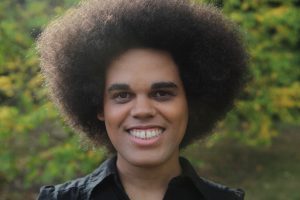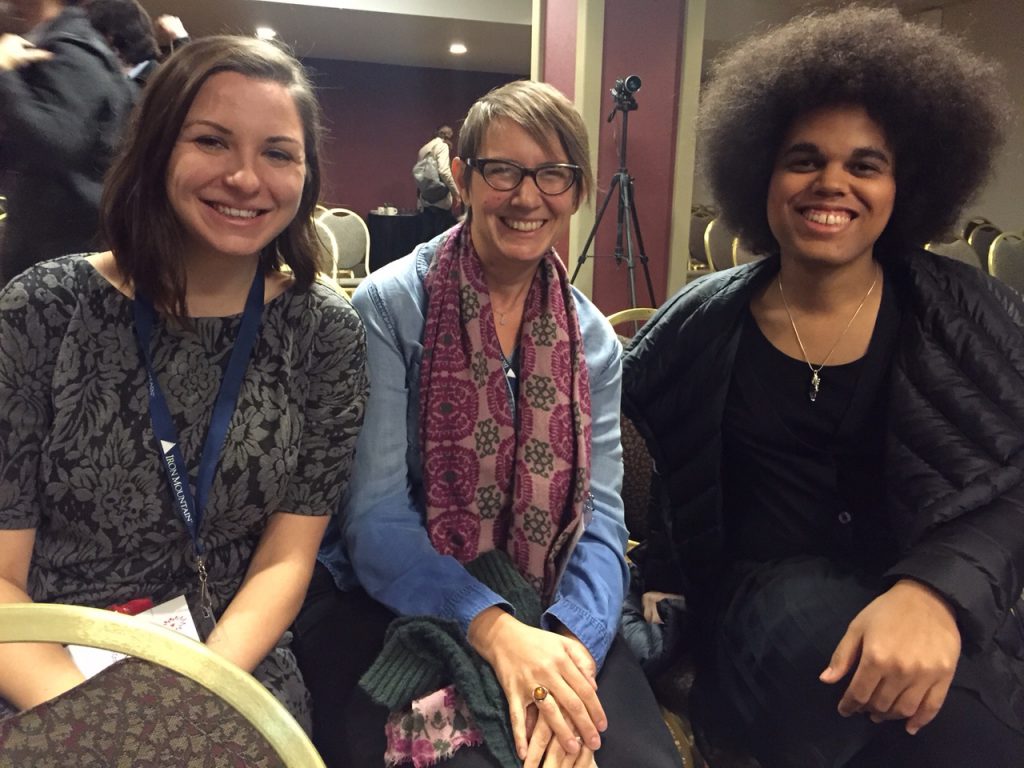 This guest post was provided by Cora Johnson-Roberson, Ph.D Candidate at Brown University and one of two 2015 AMIA + DLF Cross-Pollinators. Find them online at @cora_jr and corajr.com.
This guest post was provided by Cora Johnson-Roberson, Ph.D Candidate at Brown University and one of two 2015 AMIA + DLF Cross-Pollinators. Find them online at @cora_jr and corajr.com.
I was delighted to attend the 2015 conference of the Association of Moving Image Archivists in Portland, OR, through the combined generosity of AMIA and the Digital Library Federation. My work as an ethnomusicology Ph.D candidate focuses on the past and present of vogue (a black LGBTQ music and dance practice) as explored both through face-to-face ethnography and a vast informal archive of online audiovisual content. I wanted to attend AMIA, in part, so I could learn how professional archivists worked to create access for sizable multimedia collections like the one I encountered. In return, I was happy to lend my programming skills to the community to see what we might produce together.
My conference experience kicked off at the DLF/AMIA Hack Day, where I connected with Kathryn Gronsbell, digital asset manager at Carnegie Hall, and Michelle Roell, postgraduate asset management intern at Walt Disney Studios. We worked together to add a cluster export feature to OpenRefine, a tool for cleaning up data from spreadsheets and other sources. We also created a complementary tool called TIDY to enable other stakeholders to make decisions about how to clean data without having to install OpenRefine themselves. (A demo of TIDY is available on the AMIA Github account.)

In the conference sessions, I learned about a number of tools and technologies that archivists are using to create access and discoverability for large collections. Several presenters talked about their work with OHMS (Oral History Metadata Synchronizer), which lets users synch up audiovisual content with transcripts, tags, and textual description. Many had successfully applied this tool outside the domain of oral history, using it to describe silent films and clips hosted on YouTube. Others had used machine learning tools such as Mahout to garner insights about their collections, or created a public API for automatic speech-to-text transcription and tagging of audio content.
I was thoroughly impressed with the collegial atmosphere of AMIA. Being accustomed to [pullquote1 align=”right”]Perhaps the biggest highlight for me was the Friday evening screening of Paris is Burning, a 1990 documentary about the same NYC vogue ball community that I’m studying now… I was able to appreciate for the first time the labor of the moving image archivists who were helping to safeguard this important cultural artifact.[/pullquote1]
conferences in which Q&A time is too often filled with grandstanding and nitpicking, I was pleasantly surprised to find that nearly every presentation was followed by polite, thoughtful questions. The attendees clearly wanted to learn more about each topic and its potential application to their own work.
Perhaps the biggest highlight for me was the Friday evening screening of Paris is Burning, a 1990 documentary about the same NYC vogue ball community that I’m studying now. The film was recently restored through a collaboration between the director Jennie Livingston, Sundance, the UCLA Film & Television Archive, and the Outfest UCLA Legacy Project; in fact, several people who had worked on the restoration were present at the conference. It was very moving to experience the film’s mixture of beauty, hilarity, and grief along with other conference attendees and members of the Portland community. Further, I was able to appreciate for the first time the labor of the moving image archivists who were helping to safeguard this important cultural artifact.
I can’t thank DLF and AMIA enough for this opportunity to explore outside of my usual disciplinary bounds. It was a unique and rewarding experience: I learned a great deal, made some novel connections, and left feeling inspired about the ethos of custodianship on display amongst attendees. I hope that I will have occasion to engage further with these vibrant communities as my own work continues to develop.
